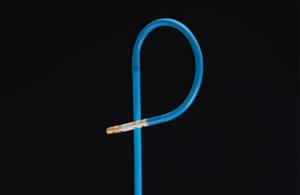
It’s about figuring out how and where to go with the cardiac ablation and then engineering the best catheter-based delivery device, according to a top Acutus Medical scientist.
Cardiac ablation is when a physician intentionally destroys a small amount of tissue in the heart to treat and prevent heart rhythm problems. The procedure creates therapeutic scars in the heart to block the irregular electrical signals that cause an uneven heartbeat.
To perform cardiac ablation, a physician inserts a thin, flexible catheter through veins or arteries into the heart. Sensors on the tip of the catheter detect the electrical signals inside the heart, which allows a cardiologist to pinpoint which area of the heart requires ablation.
Ablation devices mostly use heat (radiofrequency energy), extreme cold (cryoablation), or nonthermal pulsed-field energy to create small scars on the heart and block irregular heart rhythms. Cardiac ablation devices are on the market from prominent medtech players including Medtronic, Boston Scientific, Abbott, Atricure, Acutus Medical and others.
Acutus Medical Chief Translational Science Officer Dr. Steven Mickelsen — who was the founder of pulsed-field ablation device maker Farapulse, now a part of Boston Scientific — told Medical Tubing + Extrusion about the main challenges in creating cardiac ablation devices.
How and where do you need to go?
One half of the challenge in creating cardiac ablation devices is understanding the heart condition that needs treatment. Cardiologists have to determine how deep within the tissue lies the underlying problem, and how they need to produce scar tissue to fix it.
For example, a surgeon may create linear scars to isolate sections of the heart electronically for atrial fibrillation ablation, Mickelsen said. The challenge is creating a set of point-by-point scars that collectively all coalesce into a fence around the tissue, or alternatively, a very deep penetration into the ventricular wall.
“Sometimes those understandings of how and where to go and the diagnostic part of it is not well understood when designing these tools. The sciences are evolving as we go,” Mickelsen said.
Engineering the easiest way to deliver the therapy
Once there is a full understanding of the diagnostic need, engineers can begin to make a physical tool that will move within the body. Therein lies the second half of the challenge.

“From an engineering point of view, there are many mechanical challenges of overcoming variances in anatomy and trying to understand the different ways that catheters have to move in order to get the tip of the catheter to the target,” Mickelsen said.
To begin with, the catheter and devices used in cardiac ablation procedures have to be small enough to navigate through small-bore IVs in the leg or via percutaneous access.
The vascular system’s tortuous anatomy presents more obstacles as the catheter makes its way to the heart. To be successful, engineers must understand the different ways that catheters need to move within the body to get the device’s tip to the targeted tissue inside the heart — all while being mechanically driven by a surgeon’s hand outside the patient’s body.
During the procedure, the catheter maneuvers through the heart’s complex structure, where there are several fulcrum points, and goes out through a vein. Once in the highly constrained area of the heart, the device has to be able to transmit mechanical forces from the handle to the tip of the catheter while dealing with the challenge of visualization.
“People think that anytime you’re in the heart, it’s really a heart surgery and that it’s very dangerous and very complex – and in many ways they’re right,” Mickelsen said. “But it’s definitely turned into a simpler problem with technology that’s available in this day and age.”

